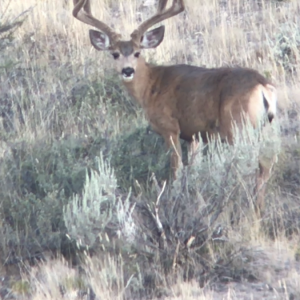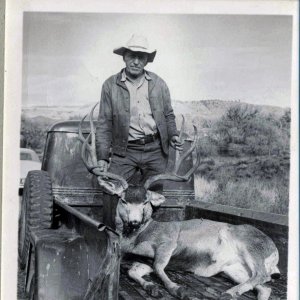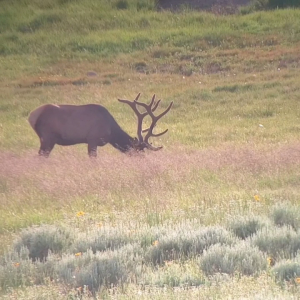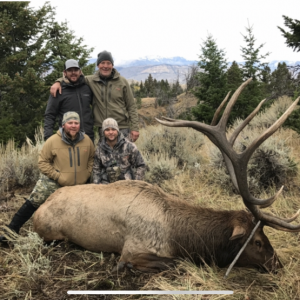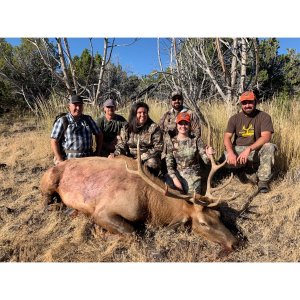swampmule
Active Member
- Messages
- 158
Seen this on a different site.
BILLINGS ? A wolf in Yellowstone National Park has been stricken with mange, the first time the disease has been documented in wolves in the park.
Mange ? a disease in which mites infect the skin, causing scratching and hair loss ? has been seen in several packs of wolves outside the park. It spreads primarily with contact between animals.
ADVERTISEMENT Biolife Plasma Services ?I'm extremely worried that now that one pack has it, a wolf will disperse and we'll have a problem parkwide,? said Doug Smith, leader of the Yellowstone wolf project.
Mange isn't always directly fatal, but significant hair loss can lead to hypothermia or infections that can kill the animal.
The disease can be particularly tough on wolves that live at high elevations in the winter, said Ed Bangs, wolf recovery coordinator for the U.S. Fish and Wildlife Service.
?I've seen them where they look nude, barely a hair left on their body,? Bangs said.
Smith said the infected wolf in Yellowstone was the 9-year-old alpha male in Mollie?s pack, which roams the eastern por-tion of the park.
He first noticed signs of mange about 10 days ago during an aerial flight over a spot where the pack was feeding on a bi-son carcass. They found the wolf three days later with the help of a satellite-tracking collar the wolf was wearing. He was about five miles away from where he'd been days earlier ? staying close to a thermal area ? and was no longer with his pack.
The wolf was darted and Smith removed its collar over concern that it might be an added irritation to its hairless neck. About 40 percent of his body hair was gone.
?He looked terrible,? Smith said.
The wolf emerged from the anesthesia and wandered off. Because he's not collared, it's unclear what's happened to him.
?He may have already perished on his own,? Smith said.
The case also raises the question of how mange was introduced into the park.
Mange has been reported in packs east of Yellowstone in Sunlight Basin, but Smith said there's never been a documented case of a wolf from outside Yellowstone moving into the park.
?It's a pretty serious disease,? Bangs said. ?Wolves north of the park have had it for years and a couple of those packs just got creamed.?
BILLINGS ? A wolf in Yellowstone National Park has been stricken with mange, the first time the disease has been documented in wolves in the park.
Mange ? a disease in which mites infect the skin, causing scratching and hair loss ? has been seen in several packs of wolves outside the park. It spreads primarily with contact between animals.
ADVERTISEMENT Biolife Plasma Services ?I'm extremely worried that now that one pack has it, a wolf will disperse and we'll have a problem parkwide,? said Doug Smith, leader of the Yellowstone wolf project.
Mange isn't always directly fatal, but significant hair loss can lead to hypothermia or infections that can kill the animal.
The disease can be particularly tough on wolves that live at high elevations in the winter, said Ed Bangs, wolf recovery coordinator for the U.S. Fish and Wildlife Service.
?I've seen them where they look nude, barely a hair left on their body,? Bangs said.
Smith said the infected wolf in Yellowstone was the 9-year-old alpha male in Mollie?s pack, which roams the eastern por-tion of the park.
He first noticed signs of mange about 10 days ago during an aerial flight over a spot where the pack was feeding on a bi-son carcass. They found the wolf three days later with the help of a satellite-tracking collar the wolf was wearing. He was about five miles away from where he'd been days earlier ? staying close to a thermal area ? and was no longer with his pack.
The wolf was darted and Smith removed its collar over concern that it might be an added irritation to its hairless neck. About 40 percent of his body hair was gone.
?He looked terrible,? Smith said.
The wolf emerged from the anesthesia and wandered off. Because he's not collared, it's unclear what's happened to him.
?He may have already perished on his own,? Smith said.
The case also raises the question of how mange was introduced into the park.
Mange has been reported in packs east of Yellowstone in Sunlight Basin, but Smith said there's never been a documented case of a wolf from outside Yellowstone moving into the park.
?It's a pretty serious disease,? Bangs said. ?Wolves north of the park have had it for years and a couple of those packs just got creamed.?

